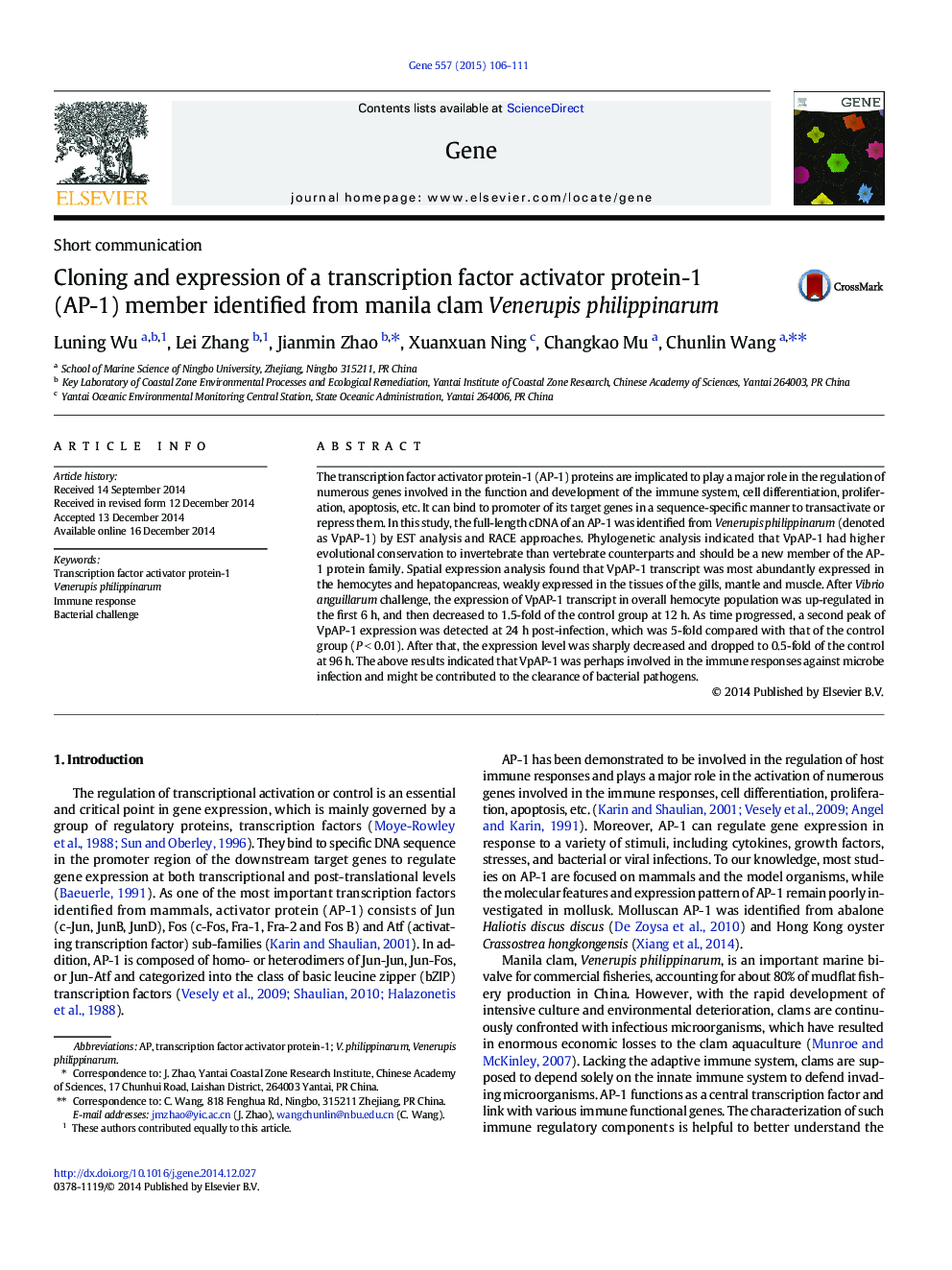| Article ID | Journal | Published Year | Pages | File Type |
|---|---|---|---|---|
| 2815949 | Gene | 2015 | 6 Pages |
•A transcription factor activator protein-1 from Venerupis philippinarum.•Vibrio anguillarum challenge up-regulated the expression of VpAP-1 transcript.•VpAP-1 was suggested to be involved in immune responses against microbe infection.
The transcription factor activator protein-1 (AP-1) proteins are implicated to play a major role in the regulation of numerous genes involved in the function and development of the immune system, cell differentiation, proliferation, apoptosis, etc. It can bind to promoter of its target genes in a sequence-specific manner to transactivate or repress them. In this study, the full-length cDNA of an AP-1 was identified from Venerupis philippinarum (denoted as VpAP-1) by EST analysis and RACE approaches. Phylogenetic analysis indicated that VpAP-1 had higher evolutional conservation to invertebrate than vertebrate counterparts and should be a new member of the AP-1 protein family. Spatial expression analysis found that VpAP-1 transcript was most abundantly expressed in the hemocytes and hepatopancreas, weakly expressed in the tissues of the gills, mantle and muscle. After Vibrio anguillarum challenge, the expression of VpAP-1 transcript in overall hemocyte population was up-regulated in the first 6 h, and then decreased to 1.5-fold of the control group at 12 h. As time progressed, a second peak of VpAP-1 expression was detected at 24 h post-infection, which was 5-fold compared with that of the control group (P < 0.01). After that, the expression level was sharply decreased and dropped to 0.5-fold of the control at 96 h. The above results indicated that VpAP-1 was perhaps involved in the immune responses against microbe infection and might be contributed to the clearance of bacterial pathogens.
